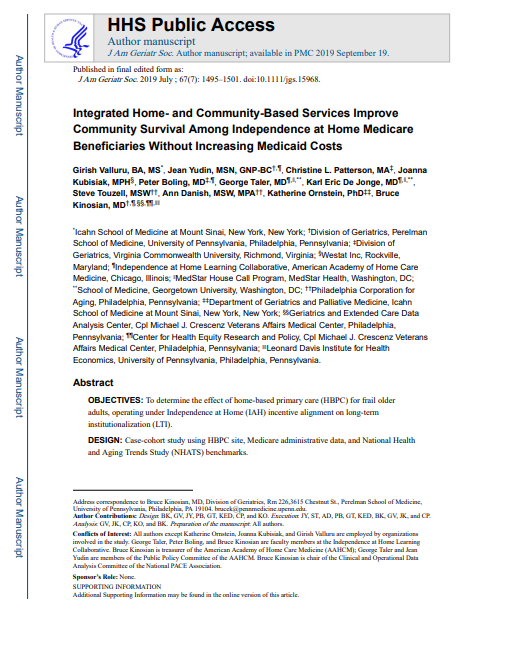Headline
Home-based primary care (HBPC) integrated with long-term services and supports (LTSS) in the community can delay long-term institutionalization in frail older adults without increased costs for home- and community-based services.
Context
Avoiding long-term institutionalization is a key outcome to help older adults with complex needs stay in the community while using less high-cost care. By providing LTSS and managed care, health systems can assist in providing better care with increased savings. Independence at Home (IAH) is a federal demonstration program for a provider managed care model that delivers home-based primary care for frail older adults. This program uses a shared savings mechanism based on a fee-for-service architecture to create aligned incentives, and has shown strong positive health and cost outcomes. This study of three IAH sites in Pennsylvania, Virginia, and Washington D.C. analyzes how HBPC affects long-term institutionalization of frail Medicare beneficiaries.
Findings
The long-term institutionalization rate in all three HBPC programs was less than both comparison groups (those in IAH but not receiving HBPC and those receiving HBPC but not in the IAH demonstration). In addition, the costs of home- and community-based services for IAH-enrolled patients was not significantly changed and mortality rates were improved.
Takeaways
Providing HBPC integrated with LTSS in the community in a program with aligned Medicare incentives can help support frail and medically complex older adults to live in community-based settings.


